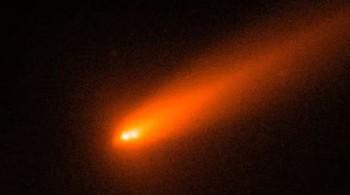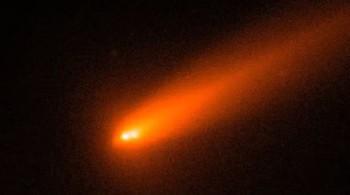
Comet C/2025 K1 (ATLAS) breaks into 3 after coming close to Sun
Comets have long been a source of fascination for astronomers and space enthusiasts alike. These icy bodies, originating from the outer reaches of our solar system, offer a glimpse into the early formation and evolution of our cosmic neighborhood. Recently, a remarkable event has captured the attention of the scientific community: Comet C/2025 K1 (ATLAS) has broken into three pieces after its close encounter with the Sun. This extraordinary occurrence was captured by astronomers using Italy’s Copernicus telescope, providing stunning visual evidence of the comet’s fragmentation.
Comet C/2025 K1 (ATLAS) was first discovered in May 2025 by the Asteroid Terrestrial-impact Last Alert System (ATLAS) survey. Initially, it was thought to be a relatively ordinary comet, with a predicted close approach to the Sun on October 8, 2025. However, as the comet drew nearer to our star, astronomers began to notice unusual activity. The comet’s nucleus, which is the central, solid part of the comet, appeared to be becoming increasingly unstable.
On October 8, Comet C/2025 K1 (ATLAS) made its closest approach to the Sun, passing within a mere 1.2 astronomical units (AU) of our star. One astronomical unit is the average distance between the Earth and the Sun, which is approximately 93 million miles or 149.6 million kilometers. As the comet drew close to the Sun, the intense heat and radiation caused the ices on its surface to vaporize, creating a bright coma and tail. However, this close encounter also had a profound effect on the comet’s structure.
Astronomers using the Copernicus telescope in Italy were able to capture the moment when Comet C/2025 K1 (ATLAS) broke into three distinct pieces. The stunning images show two large chunks, which have drifted approximately 2,000 kilometers apart, with a smaller third piece visible to the left of the pair. This fragmentation is a result of the comet’s nucleus becoming unstable due to the intense gravitational and thermal forces exerted by the Sun.
The breakup of Comet C/2025 K1 (ATLAS) is a rare and significant event, offering scientists a unique opportunity to study the internal structure and composition of comets. By analyzing the fragments and their trajectories, astronomers can gain insights into the comet’s origins and evolution. The fragmentation of comets is also an important area of research, as it can provide clues about the potential risks and consequences of comet impacts on Earth.
The discovery of Comet C/2025 K1 (ATLAS) and its subsequent breakup is a testament to the power of modern astronomy and the importance of continued exploration and monitoring of our solar system. The use of advanced telescopes and survey systems, such as the ATLAS survey, has enabled scientists to detect and track comets with unprecedented precision. As our understanding of comets and their behavior continues to evolve, we may uncover new and exciting secrets about the formation and evolution of our cosmic neighborhood.
In conclusion, the breakup of Comet C/2025 K1 (ATLAS) into three pieces is a remarkable event that has captured the imagination of astronomers and space enthusiasts around the world. The stunning images captured by the Copernicus telescope offer a unique glimpse into the internal structure and composition of comets, and the scientific community is eager to continue studying this extraordinary phenomenon. As we continue to explore and understand our solar system, we may uncover new and exciting secrets about the formation and evolution of our cosmic neighborhood.




